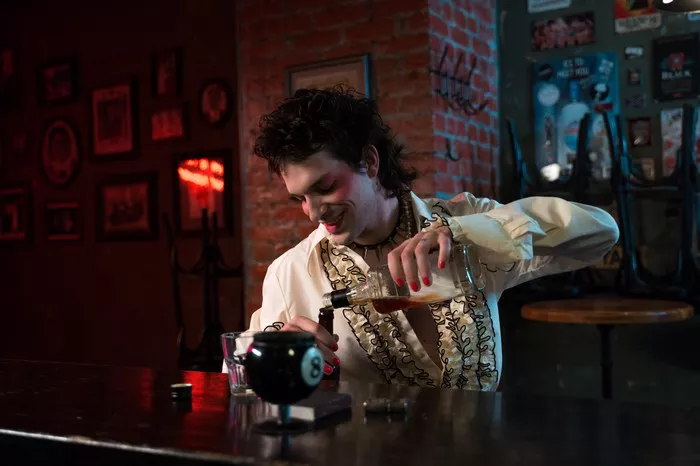In the world of spirits, the rise of flavored and colored varieties has sparked a myriad of questions among enthusiasts. One intriguing query that often surfaces is, “Is pink gin a spirit?” To unravel this mystery, we delve into the origins, production methods, and characteristics of pink gin to determine its classification within the broader realm of spirits.
A Historical Prelude: The Origins of Pink Gin
To understand whether pink gin qualifies as a spirit, one must first explore its historical roots. Pink gin’s origin dates back to the 19th century when British naval officers stationed in India sought creative ways to make the bitter taste of quinine more palatable. Mixing gin with angostura bitters, a medicinal concoction, resulted in a rosy-hued libation – the precursor to today’s pink gin. Although rooted in necessity, this historical context hints at the spirituous nature of the beverage.
The Evolution of Pink Gin: From Remedy to Trend
Over the years, pink gin has undergone a remarkable transformation from a medicinal remedy to a trendy and fashionable drink. The infusion of various botanicals, fruits, and spices contributes to its pink hue and diverse flavor profile. This evolution raises the question: Does the addition of flavors disqualify pink gin from being considered a true spirit? Analyzing the production process becomes crucial in answering this query.
Production Process: Crafting the Pink Elixir
The production process plays a pivotal role in determining whether pink gin is indeed a spirit. Traditional gin production involves distilling botanicals with neutral spirits, resulting in a clear liquid. In the case of pink gin, the addition of natural flavors or colorants occurs after distillation, imparting the characteristic hue. This deviation from the classic process prompts contemplation on whether the added components compromise its status as a true spirit or enhance its appeal as a modern variant.
Distillation and Flavor Infusion: Navigating the Gray Area
Distillation stands as a defining criterion for spirits, traditionally involving the separation of alcohol from a fermented mixture. In the case of pink gin, distillation remains a fundamental step, ensuring the base spirit meets the criteria for a distilled beverage. However, the introduction of flavors post-distillation introduces a gray area. Purists may argue that the essence of a spirit lies in its unadulterated form, while others embrace the evolving landscape of flavored spirits.
Regulatory Framework: Defining the Spirit Category
To ascertain whether pink gin holds a legitimate claim as a spirit, one must turn to regulatory bodies and their definitions. The regulatory framework varies globally, with different countries adopting distinct standards for spirits. While some authorities maintain a stringent stance, requiring spirits to adhere to traditional distillation methods, others embrace innovation and the inclusion of flavors. Exploring these regulations offers insights into how pink gin navigates the regulatory landscape and whether it aligns with established spirit classifications.
See Also: hold champagne glass
The Flavor Spectrum: Redefining Spirit Characteristics
One cannot discuss pink gin without delving into its diverse flavor spectrum. The infusion of botanicals, berries, or even floral elements contributes to a broad range of taste profiles. Pink gin enthusiasts argue that this diversity enhances the spirit’s appeal, making it more versatile in cocktails and enjoyable for a wider audience. Assessing whether the flavor spectrum aligns with traditional spirit characteristics becomes imperative in determining pink gin’s status within the spirit category.
Mixology and Cocktails: A Bridge Between Tradition and Innovation
Pink gin’s popularity in the mixology scene adds another layer to the debate. Mixologists worldwide have embraced the vibrant hues and unique flavors, incorporating pink gin into an array of innovative cocktails. This trend blurs the lines between traditional and contemporary perceptions of spirits. By exploring the role of pink gin in mixology, we gain insights into its integration into the broader world of spirits and whether its adaptability strengthens or challenges its spirit classification.
Consumer Perception: Shaping the Identity of Pink Gin
The perception of consumers significantly influences the identity and categorization of spirits. Pink gin’s appeal lies not only in its taste but also in its visual allure. The color, often associated with romance and elegance, has carved a niche for itself in the market. Understanding how consumers perceive pink gin – whether as a distinct spirit or a flavored variation – provides a valuable perspective on its place within the spirit landscape.
Market Trends: The Surge of Pink Gin Brands
The surge in the number of pink gin brands entering the market reflects the growing demand for this contemporary spirit. Distilleries, both established and emerging, recognize the trend and are capitalizing on the popularity of pink gin. Exploring the market dynamics offers insights into whether pink gin’s proliferation aligns with consumer preferences for innovative spirits or challenges traditional notions of what constitutes a spirit.
Conclusion: Navigating the Spectrum of Spirituality
In conclusion, the question, “Is pink gin a spirit?” invites us to navigate the spectrum of spirituality within the world of distilled beverages. While pink gin’s production process may deviate from the traditional methods, its adherence to distillation, diverse flavor profile, and acceptance within regulatory frameworks suggest that it rightfully earns its place as a spirit. The evolving landscape of spirits, shaped by consumer preferences and market trends, embraces the innovative and diverse, challenging conventional definitions. Pink gin, with its historical roots, modern adaptations, and dynamic presence in mixology, stands as a testament to the ever-expanding boundaries of the spirit category.


